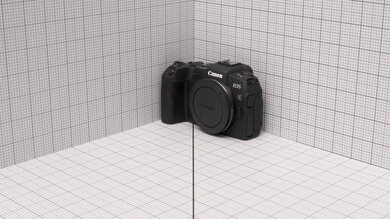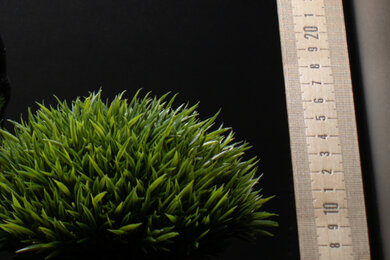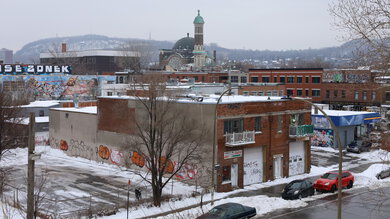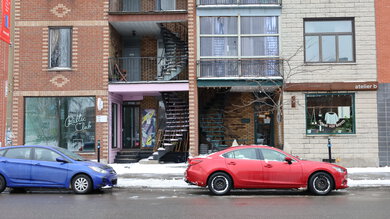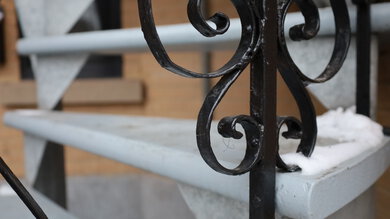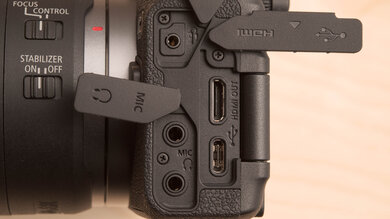The Canon EOS RP is a full-frame mirrorless camera. It offers excellent image quality, as it keeps noise and graininess to a minimum even when shooting in dark environments at high ISO levels. It also has an effective autofocus system for photography and is quite comfortable to use, with an intuitive menu system. Unfortunately, its battery life is quite short, so it's not a great fit for extended shooting sessions. Its maximum shooting speed is also quite slow, so it isn't the best option for capturing still images of fast-moving subjects. Recording capability in 4k is also quite limited, as it incurs a heavy crop and can't record at high frame rates.
Our Verdict
The Canon RP is good for travel photography. It offers excellent image quality, even in low light, and can achieve fairly extended shutter speeds, allowing for complex long-exposure photos. It also has an effective autofocus system that can track subjects reliably and quickly. Compared to point-and-shoot cameras, it's only passably portable, but offers great ergonomics, as even users with large hands should find it comfortable to use. Unfortunately, it has a short battery life, so you may want to purchase an extra battery if you plan on using it for extended periods.
- Amazingly comfortable to use.
- Impressive autofocus performance.
- Excellent image quality.
- Relatively bulky design.
- Short battery life.
The Canon RP is good for landscape photography. Images are sharp and mostly free of noise, even when you step up its ISO setting to compensate for poor lighting conditions. It also feels quite sturdy and is comfortable to use, though it isn't as easy to carry around on a hike compared to a phone camera or a point-and-shoot. It has a sharp touchscreen that's bright enough to be seen even under direct sunlight.
- Amazingly comfortable to use.
- Impressive autofocus performance.
- Excellent image quality.
- Fully-articulated screen is bright and can be seen under direct sunlight.
- Relatively bulky design.
- Short battery life.
The Canon RP is okay for sports and wildlife photography. Its slow maximum shooting speed makes it a challenge to capture clear photos of fast-moving subjects. Also, since you can't shoot continuously in the camera's silent shooting mode, you may find it hard to capture photos of skittish wildlife. Thankfully, it's fitted with a quick and consistent autofocus system and offers great image quality, even in dimly-lit environments. It's also decently well-built and amazingly comfortable to use.
- Amazingly comfortable to use.
- Impressive autofocus performance.
- Excellent image quality.
- Relatively bulky design.
- Short battery life.
- Slow continuous shooting speed.
The Canon RP has good RAW image quality. It does a good job of managing noise in low light situations, though it doesn't perform as well in that regard as higher-end full-frame models. Its high-resolution sensor captures images with plenty of fine detail, even when punching in. However, its dynamic range is underwhelming. It can still capture a reasonably wide range of detail, but it falls short of newer full-frame sensors.
- Good noise handling.
- High resolution.
- Dynamic range is relatively limited.
The Canon RP is very good for vlogging. Since its screen is fully articulated, you can see what you're recording even when the camera is pointed at you. As long as you shoot in FHD, the camera does a great job of smoothing out camera shake if you're recording handheld video, and its autofocus system should have no issue tracking your face. Unfortunately, recording in 4k incurs a very heavy crop and results in a severe decrease in video stabilization performance as well as the autofocus' face-tracking capability.
- Fully-articulated screen is bright and can be seen under direct sunlight.
- Impressive overall video stabilization performance.
- Decent video quality in FHD and 4k.
- Relatively bulky design.
- Heavy crop in 4k recording.
The Canon RP is decent for studio video. Video quality is decently sharp and fairly low in noise whether you record in FHD or 4k, though recording in the latter does result in a severe crop that cuts out many details around the borders of the frame as well as a drop in autofocus subject-tracking consistency. There's a wide variety of inputs and outputs on the camera that let you connect an auxiliary mic, headphones, and an external recorder, though there's no room for a second SD card in case you run out of space while recording.
- Decent video quality in FHD and 4k.
- Easy-to-use menu system.
- Wide variety of inputs and outputs.
- Short battery life.
- Heavy crop in 4k recording.
- Only one SD card slot.
The Canon RP isn't designed for action video. While it's smaller than conventional DSLR cameras, it's still too bulky to be mounted on a helmet or chest rig. It also doesn't offer any high-speed frame rate options to create smooth slow-motion video in 4k or FHD. That said, it does a great job of smoothing out camera shake in FHD and has a decently sturdy construction.
- Impressive overall video stabilization performance.
- Decent video quality in FHD and 4k.
- Relatively bulky design.
- Heavy crop in 4k recording.
- No support for recording at high-speed frame rates.
Changelog
- Updated Jan 29, 2024: Added text to 'Raw Photo Performance' verdict box.
- Updated Jan 29, 2024: Converted to Test Bench 0.12.1.
- Updated Sep 06, 2023: Added a link to the Sony α7 II in the 'Photo Image Stabilization' box.
- Updated May 10, 2023: Added a link to the Canon EOS R8 in the '4k Video Frame Rate' section.
Check Price
Differences Between Sizes And Variants
The Canon EOS RP is only available in one color variant: 'Black', and you can see its label here. We tested it with the Canon RF 24-105mm f/4-7.1 IS STM lens. While it can be purchased with other lenses, like the RF 24-240mm F4-6.3 IS USM lens, we haven't tested its performance in any other configuration. You can also purchase its body individually.
If you come across a different variant of the Canon EOS RP, let us know in the discussions so we can update our review.
Popular Camera Comparisons
The Canon EOS R8 is very similar to the Canon EOS RP in design and build quality. However, the R8 has a different sensor and a new processor that gives it an edge in image and video quality. It also has a better autofocus system, faster e-shutter burst shooting, better internal video recording capability, and more video frame rate options.
The Canon EOS R is better overall than the Canon EOS RP. It's a more premium camera with better build quality, including weather-sealing, a higher-resolution electronic viewfinder, and a higher-resolution sensor, not to mention a significantly longer battery life and slightly quicker burst shooting. The RP is a much more portable full-frame camera, if that's a priority, and still captures excellent image quality. Both cameras also use the same lens mount, and lenses will have a much bigger impact on your photography, so the best option between these two will be whichever one suits your budget and ergonomic preferences.
The Canon EOS RP and the Canon EOS R50 are in different classes, and one may suit you better than the other, depending on your budget and needs. The RP is a full-frame model with very limited video features, while the R50 has a smaller APS-C sensor and a more portable body. The R50 is more well-rounded, with better video performance and more frame rate options. However, if you need full-frame image quality, the RP is one of the most affordable full-frame cameras on the market.
The Canon EOS RP and the Canon EOS R10 are both lower mid-range/entry-level cameras but with different design briefs and differing intended use cases. The older RP has a higher-resolution full-frame sensor that produces better image sharpness and superior noise-handling capability, making it a better option for still photography, especially in low light. That said, the R10 holds a wide range of other advantages. It feels better built, offers superior battery life from the same LP-E17 battery, and has a significantly faster max shooting speed, though admittedly with a pretty small image buffer. The R10 is a much better option for video work, too: it supports 10-bit 4:2:2 recording when using the HDR PQ profile, can record uncropped 4k video at up to 30 fps or cropped 4k video at 60 fps, and offers superior autofocus tracking performance.
Test Results

- Textured handgrip is big enough for most hand sizes and provides a secure hold
- Plenty of room between the lens and the body, so your fingers shouldn't feel pinched
- Back rest is big enough to allow you to rest your thumb in place without touching any of the controls
- Changing aperture and shutter speed via the command dials is easy with your eye pressed up against the viewfinder, but adjusting the ISO requires an extra button input beforehand
- Rubber eyecup around the viewfinder is stiff and could be uncomfortable to press your eye against for extended shooting sessions
- Easy to navigate via the physical controls or by using its touchscreen
- Guide mode helps you understand some functions
- A few essential functions are behind sub-menus, like changing the autofocus tracking mode or switching from manual to automatic focus
- Some features can only be enabled when the camera is in a certain mode, such as the silent shooting feature only being accessible when the camera is in 'Scene' mode
If you'd prefer a camera with in-body image stabilization, consider the Sony α7 II.
If you want a similar camera that can record 4k video at up to 60 fps without a crop, check out the Canon EOS R8.

